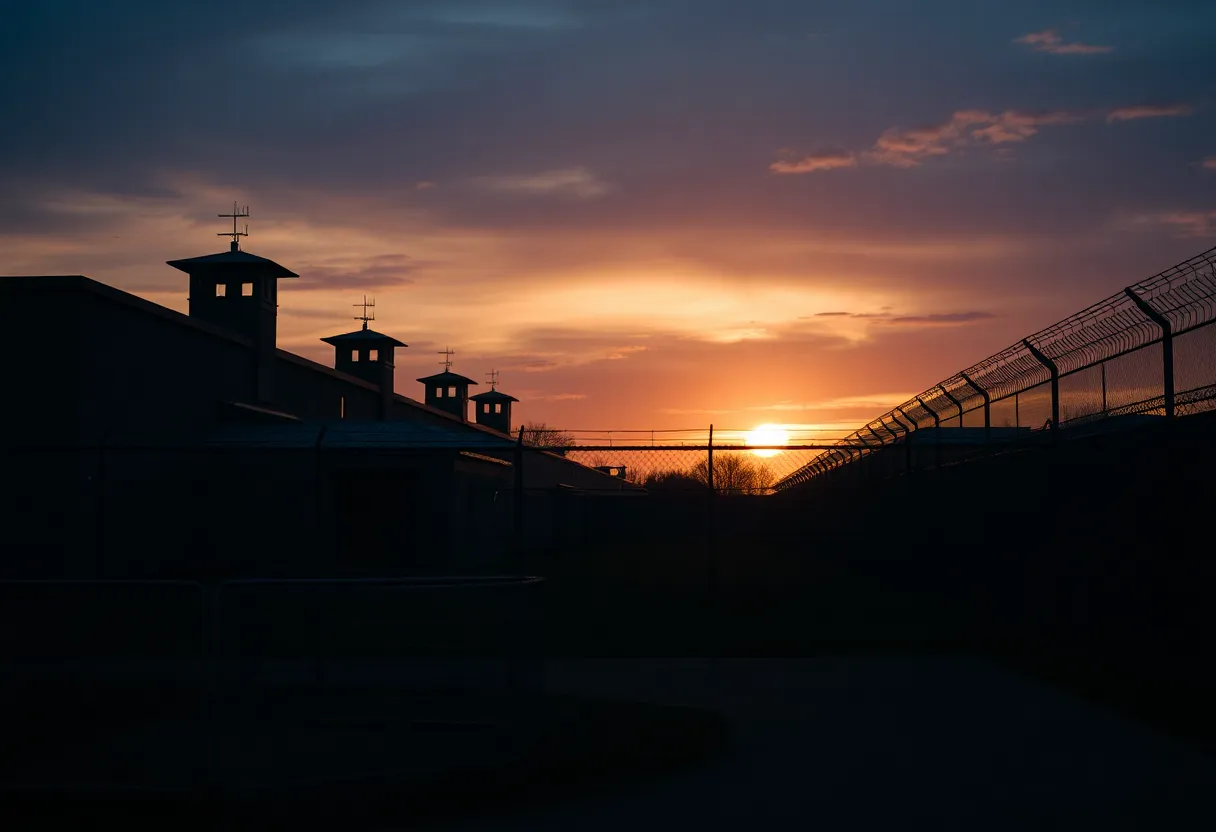

Historic Execution by Firing Squad
On March 7, 2025, Columbia, South Carolina, witnessed its first execution by firing squad in over 15 years. Brad Sigmon, convicted of heinous murders in 2001, opted for this method, reigniting debates surrounding capital punishment. The execution, met with protests and legal challenges, resumed a 13-year hiatus in South Carolina, affecting families and advocates across the nation. As more executions loom, the conversation on the ethics of such practices continues to evolve.
On the evening of March 7, 2025, Columbia witnessed a significant and somber event as Brad Sigmon, aged 67, was executed by firing squad at the Broad River Correctional Institution. This moment marked a notable milestone as it became the first execution by this method in the United States in over 15 years.
Sigmon had been on death row for over two decades, convicted in 2001 for the brutal murders of his ex-girlfriend’s parents, David and Gladys Larke. Using a baseball bat in their South Carolina home, his actions were not just heinous; they were deeply rooted in a tragic backstory. Authorities revealed Sigmon’s intentions to not only murder the couple but also to kidnap his ex-girlfriend after he felt spurned by her. It was a crime that left lasting scars on the victims’ families, who have long felt the absence of their loved ones during crucial life moments.
At precisely 6:05 p.m., three volunteer prison staff members, armed with rifles, shot Sigmon simultaneously from a distance of 15 feet. The execution was carried out behind closed doors, with witnesses watching through bullet-resistant glass. There was no hesitation in the execution; Sigmon was pronounced dead just moments later, at 6:08 p.m., marking the end of his life but reigniting conversations about the morality and effectiveness of the death penalty.
What makes this particular execution intriguing is the method chosen by Sigmon himself. Opting for the firing squad, he expressed a distinct fear of the electric chair and lethal injections, raising eyebrows about the psychology of those on death row. In a world where discussions about capital punishment are becoming increasingly common, the choice of execution method adds another layer to the dialogue.
In his final moments, Sigmon enjoyed a last meal consisting of fried chicken, green beans, mashed potatoes, biscuits, cheesecake, and sweet tea. Interestingly, this menu differed from his initial request, which aimed to provide food for fellow inmates, highlighting the complexity of his character as he faced the end of his life.
As the execution neared, there were legal challenges. The U.S. Supreme Court denied an emergency motion to stay Sigmon’s execution, and South Carolina Governor Henry McMaster denied requests for clemency. The tension surrounding the execution was palpable, evidenced by protests outside the prison, where demonstrators rallied for the sanctity of life and against capital punishment.
Sigmon’s execution also marked the resumption of capital punishment in South Carolina after a 13-year hiatus, a fact that has reignited debates about the ethical implications of such practices in modern society. South Carolina remains one of only five states to allow firing squads as a method of execution, indicating a varied perspective across the country regarding how justice serves society.
In the aftermath, South Carolina’s death row still houses 27 inmates, with two more lined up for imminent executions. The ripples of Sigmon’s actions and execution extend beyond his life, affecting numerous families, advocates, and lawmakers alike. As the dust settles from this historic event, many await the next chapter in the ongoing narrative of capital punishment in America.
News Summary In a controversial execution, South Carolina has carried out the death penalty on…
News Summary Quarterback LaNorris Sellers from South Carolina is gaining significant attention as a potential…
News Summary A significant winter storm is predicted to bring potential snowfall to various regions…
News Summary Authorities are investigating the death of Larisha Thompson, a 40-year-old woman found shot…
News Summary German manufacturer ARKU Inc. is set to launch its first operational facility in…
News Summary In response to soaring insurance costs threatening local bars and restaurants, South Carolina…